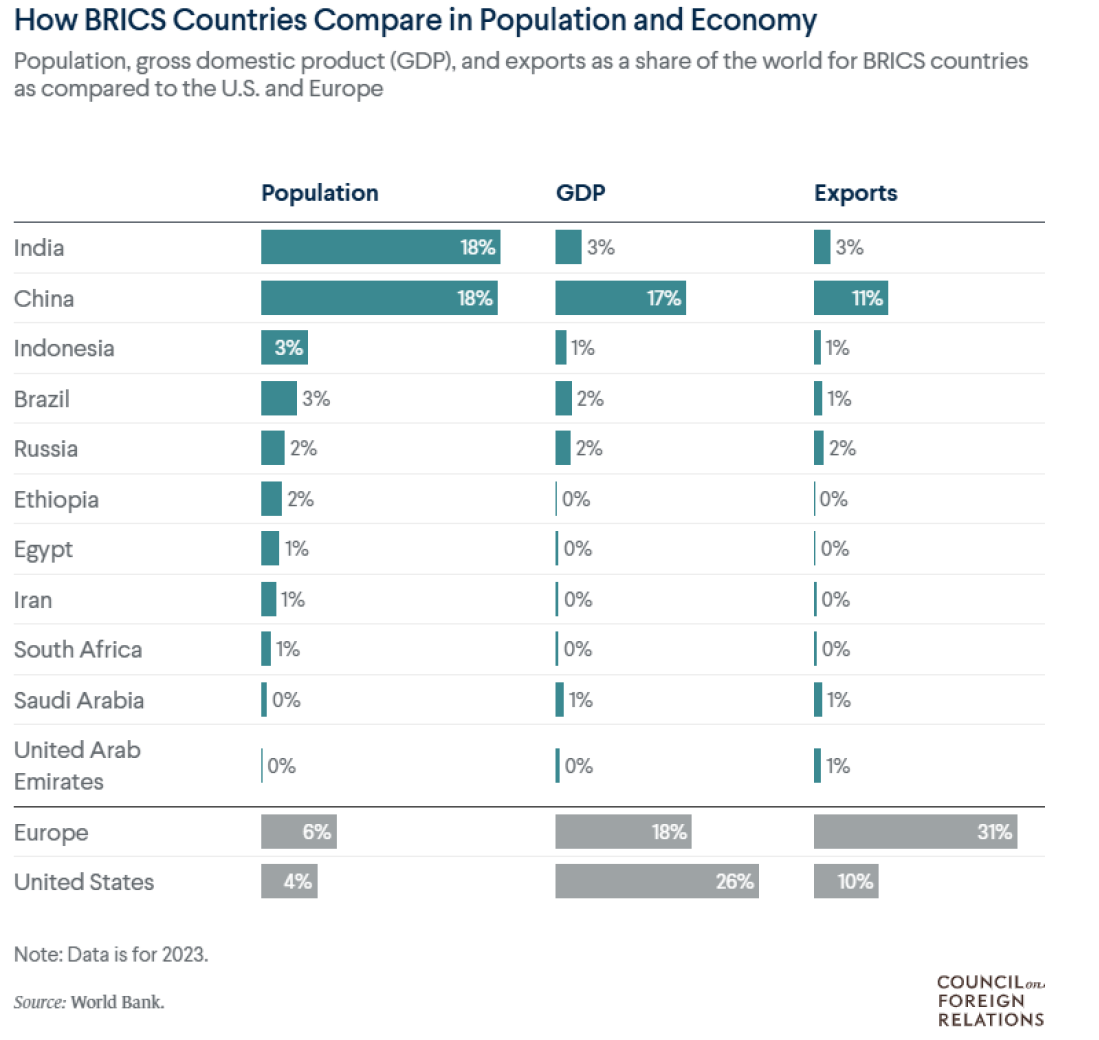Philippines earthquake: Magnitude 6.7 quake hits off Mindanao
A magnitude 6.7 earthquake has struck off the southern Philippines, with no immediate reports of damage or injuries, the U.S. Geological Survey has sa...
BRICS is no longer just a club of emerging economies, it’s evolving into a global power bloc. With more countries joining and dozens lining up, BRICS+ is challenging Western dominance and reshaping how the world does business, diplomacy, and development.
What is BRICS+?
Once a loose alliance of five big emerging economies, BRICS is quickly becoming a magnet for the Global South. BRICS+ refers to the group’s expanded format, one that now includes not just Brazil, Russia, India, China, and South Africa, but also new full members like Egypt, Ethiopia, Iran, the UAE, and Indonesia. More than 40 other countries are queuing up to join as either full or “partner” members.
This expansion is more than symbolic. Together, BRICS+ countries account for over 40% of the world’s population and about a third of the global economy, surpassing even the G7 on purchasing power terms. They’re pushing to reshape a world order long dominated by the West.

Why now?
Many developing nations feel sidelined by institutions such as the IMF, World Bank, and UN Security Council, bodies they say are controlled by Western powers. BRICS+ promises a platform that better reflects their interests. And in the wake of COVID-19 and global economic shocks, dissatisfaction with the status quo has grown deeper.
“This system was created by rich countries to benefit rich countries,” said UN Secretary-General António Guterres, echoing a sentiment shared across the Global South.
What does BRICS+ offer?
At the core is the New Development Bank, an alternative lender to the World Bank, which has already financed over 100 projects. There's also growing momentum to trade in local currencies and reduce dependence on the U.S. dollar, though a shared BRICS currency remains far off.
By building its own financial architecture and setting its own diplomatic agenda, BRICS+ aims to give its members more independence, especially from Western sanctions.
But it’s not all smooth sailing
BRICS+ is not a formal alliance. It lacks a charter, secretariat, or unified strategy. Internal rivalries, such as between China and India, or Egypt and Ethiopia, often stall consensus. And while Russia and China champion an anti-West stance, others like Brazil and India seek a more balanced approach.
Former Goldman Sachs economist Jim O’Neill, who coined the original “BRIC” term, recently called the group “symbolic at best,” warning that internal divisions could undermine its ambitions.
So why are countries still eager to join?
For many, BRICS+ offers hope, a chance to shape global rules rather than follow them. It appeals especially to countries frustrated with double standards on trade, climate finance, and development.
“BRICS is becoming a voice for countries that never had a seat at the table,” said a senior official from Indonesia.
And as BRICS+ continues to grow, the big question remains: can it turn its diversity into strength, or will its differences hold it back?
Germany’s foreign intelligence service secretly monitored the telephone communications of former U.S. President Barack Obama for several years, including calls made aboard Air Force One, according to an investigation by the German newspaper Die Zeit.
Israeli media report that Israeli Prime Minister Benjamin Netanyahu chaired a lengthy security meeting that reportedly focused on the country’s regional threats, including Gaza, Lebanon, and Iran.
At the end of last year, U.S. President Donald Trump was reported to have raised the Azerbaijan–Armenia peace agenda during a conversation with Israel’s prime minister, warning that if peace were not achieved, Washington could raise tariffs on both countries by 100 percent.
President Ilham Aliyev said 2025 has politically closed the Armenia-Azerbaijan conflict, as a Trump-era reset in U.S. ties, new transport corridors and a push into AI, renewables and defence production reshape Azerbaijan’s priorities.
Dmitry Medvedev has warned that Ukrainian President Volodymyr Zelenskyy could face the same fate as Venezuelan leader Nicolás Maduro, following what he described as a U.S. ‘abduction’ of the Venezuelan president.
A magnitude 6.7 earthquake has struck off the southern Philippines, with no immediate reports of damage or injuries, the U.S. Geological Survey has said.
U.S. President Donald Trump and his team say they're actively exploring options to acquire Greenland, with discussions including the potential use of U.S. military, which is "always an option," according to a statement from the White House on Tuesday.
Leaders from the U.S. and European countries moved closer to finalising legally binding security guarantees for Ukraine following a “Coalition of the Willing” meeting in Paris on Sunday.
At least four people were killed and several others injured on Tuesday during fighting in Aleppo, northern Syria, state media reported. The government and the Kurdish-led Syrian Democratic Forces (SDF) are trading blame for the violence.
Ukrainian President Volodymyr Zelenskyy, French President Emmanuel Macron, and British Prime Minister Keir Starmer signed a declaration of intent on Tuesday outlining the future deployment of multinational forces in Ukraine.
You can download the AnewZ application from Play Store and the App Store.

What is your opinion on this topic?
Leave the first comment